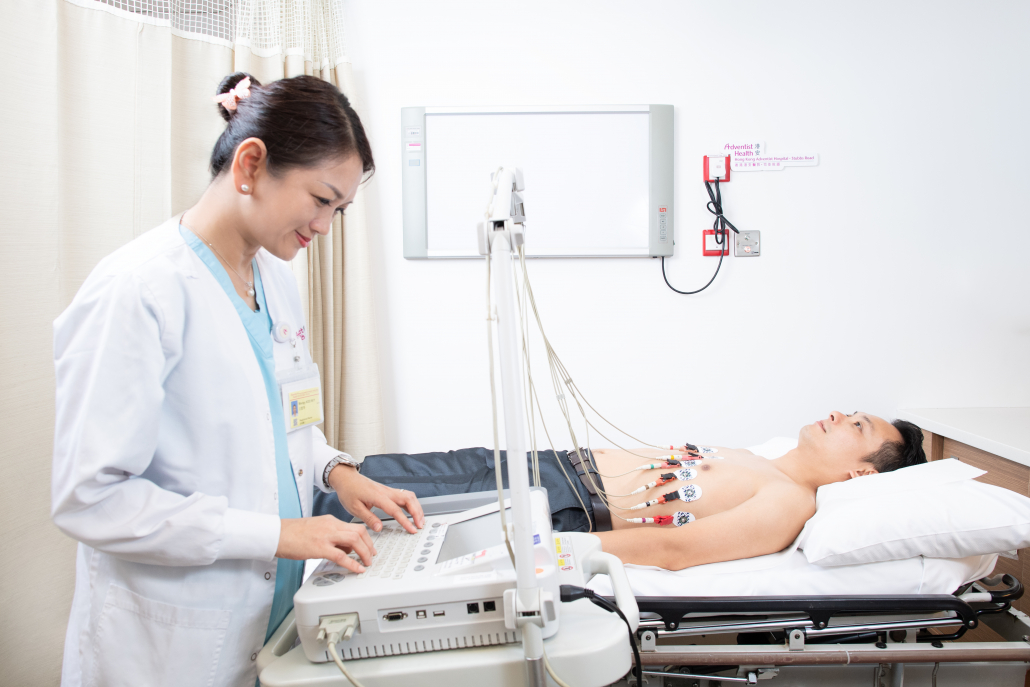
Hong Kong Adventist Hospital – Stubbs Road offers Coronary Heart Disease treatment
In collaboration with Hong Kong Adventist Hospital – Stubbs Road
One of the most common types of heart disease, coronary heart disease (CHD), affects over 3000 people yearly in Hong Kong. It occurs when plaques build up in the arteries (major vessels that supply blood to the heart), which leads to a narrowing or blockage of the arteries and insufficient blood supply to the heart. When this happens, patients may experience angina pectoris (chest pain), myocardial infarction (heart attack), and in severe cases, myocardial necrosis (cell death of cardiomyocytes) or even death.
Here’s what you need to know about CHD and how to treat it.
What is angioplasty?

Patients admitted to the hospital for acute CHD may require angioplasty, a minimally invasive procedure that offers advantages such as less surgical trauma and a high success rate.
After surgery, there will be wound management and patients have to wear a pressure device compression for a few hours. After that, they can resume their diet and return home the next day.
Hong Kong Heart Center

Hong Kong Adventist Hospital – Stubbs Road’s (HKAH-SR) Hong Kong Heart Center is the first dedicated cardiology facility in the city set up by a private hospital. Established in 1985, the Center is led by experienced cardiologists and medical professionals from various specialities. It offers a comprehensive list of cardiology services, from examination and consultation to treatment, surgery and rehabilitation, to assist in the confirmation of the diagnosis of underlying heart disease.
To ensure its patients have a comfortable time, the Center is elegantly designed with patient safety as a top priority. Its ward employs a range of electronic and automation technologies that facilitate the provision of safe, high-quality medical services that cater to the specific needs of patients and their caregivers.
Since its establishment, the Center has grown to tackle more complex cases with the evolution of technology. It has two labs — compared to one lab in most other centers — that are equipped with anaesthetic equipment for complex and structural heart cases and provides prompt primary Percutaneous Coronary Intervention (PCI) at any time.
Meet Dr Lo Ka Yip, David, Resident Consultant in Cardiology, Hong Kong Adventist Hospital – Stubbs Road

As the Resident Consultant Cardiologist in HKAH-SR, Dr Lo has experience as the Consultant Cardiologist and Director of Cardiac Intervention Center in Hospital Authority HK and received his Cardiology and Advanced Internal Medicine training in United Christian Hospital Hong Kong, as well as overseas training in Interventional Cardiology in Lausanne University Hospital (Le Centre hospitalier universitaire vaudois) in Switzerland, among other credentials.
He has extensive experience in complex percutaneous coronary intervention like intervention in left main coronary artery disease, triple vessels disease, calcified lesions and chronic total occlusion. In addition, he is experienced in device implantation like leadless pacemaker implantation.
As a full-time doctor at HKAH-SR, Dr Lo spends his days between In-Patient, Out-Patient Clinic, Cardiopulmonary Laboratory (Non-invasive diagnostic tests for the heart rhythm and heart function are performed) and Catheterization Laboratory (Minimally invasive tests and procedures to diagnose and treat cardiovascular disease are performed). After performing surgeries in the morning, he will return to the ward in the late afternoon or early evening to check on his post-operation patients. Apart from clinical duties, he will also spend time organising different webinars, online courses, and educational activities for doctors and allied health colleagues.
As for his most memorable moment as a doctor? Workwise, Dr Lo remembers setting up the cardiac Cath lab in one of the HA hospitals, fondly. When it comes to his patients, though, he points out one specific moment.
“I had a patient with very severe coronary artery disease (chronic total occlusion of all the three coronary arteries) making his heart function very poor (LVEF<30%). He was very symptomatic with dyspnoea and chest pain on minimal exertion. PCI is technically challenging. One option was to do open heart surgery for him (i.e. CABG). However, the risk of doing CABG was too high because of his poor heart function. Finally, we did PCI for him and we opened all three of the blocked coronary arteries. After PCI, his symptoms completely resolved and heart function improved.”

Find out more about the Hong Kong Heart Center at Hong Kong Adventist Hospital – Stubbs Road on its website.



